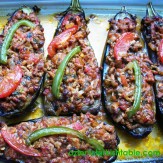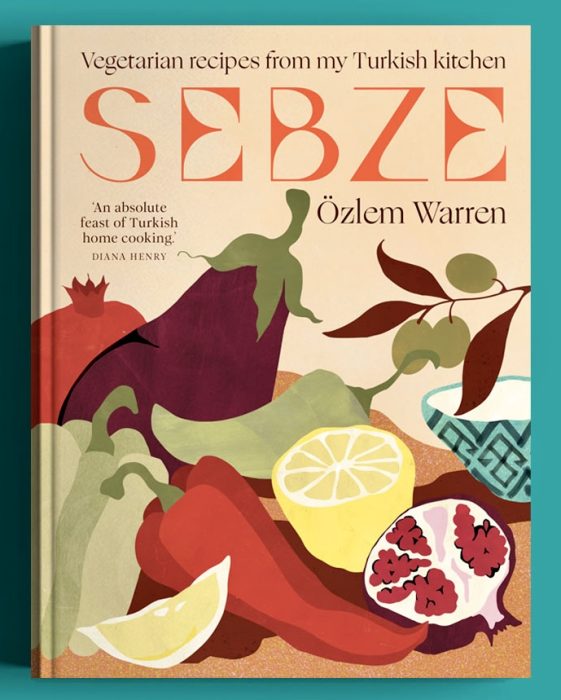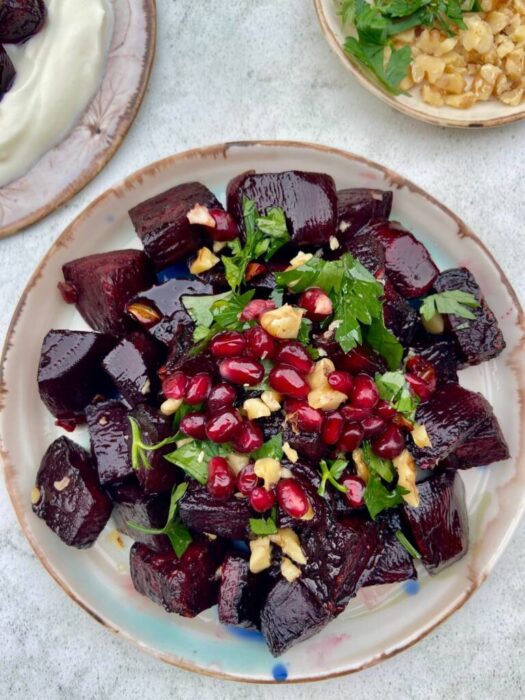
These round (and sometimes oval) finger dented, Tırnaklı Pide Ekmek is a national favourite. Also known as Ramazan pidesi, it is the traditional bread we eat to break the fast during Ramadan. Happy memories of queuing at the bakery, fırın, to get our freshly baked, warm pide ekmek for our iftar, the meal we eat to break the fast during Ramadan. Most bakeries in Istanbul pretty much offer Tırnaklı Pide Ekmek all year around these days. It is a lovely bread to accompany breakfast, meze, grills, soups, casseroles, and easier than you think to make at home.
Prepare ahead and freeze: Though it tastes best on the day, you can make Tırnaklı Pide Ekmek a day ahead and wrap with a clean kitchen cloth to keep fresh and moist. You can cut the pide ekmek in quarters, wrap with foil and freeze too.
I also love our easy, puffy bread, balon ekmek, fantastic to serve with meze, casseroles, grills. You can find my easy puffy bread, balok ekmek recipe, at my new book SEBZE.

I hope you enjoy my Tırnaklı Pide Ekmek recipe, Ramadan Mubarak if you are observing and Afiyet Olsun,
Ozlem x
- 500g / 1lb 1.6oz all-purpose plain flour (plus extra for shaping)
- 1 ½ tsp salt
- 11g/0.4 oz dry yeast
- 1 tsp sugar
- 2 tbsp olive oil
- 170ml/6fl oz luke warm water
- 155ml/5 ½ fl oz luke warm milk
- for shaping:
- 3 tbsp room temperature water
- 3 tsp all-purpose plain flour
- for brushing and topping::
- 1 tbsp whole milk yoghurt
- 1 egg yolk, beaten
- 1 tbsp olive oil
- 2 tbsp sesame seeds
- 1 tsp nigella seeds
- 2 tsp maize flour, cornmeal or polenta, to dust the trays
- Combine the yeast, luke warm water and sugar in a small bowl and mix to dissolve. Cover with cling film and set aside for 10 minutes to get frothy.
- Sift the flour into a large bowl and make a well in the middle. Pour in the yeast mixture, olive oil, salt and lukewarm milk. Using your hands, turn the mixture into a soft, sticky dough. Place the dough into a lightly floured, dry, clean surface. Knead for 5 minutes, adding a little more flour if needed, to achieve a soft, elastic and smooth dough. Place the dough in a lightly greased bowl, cover with cling film or damp cloth and leave to rest in a warm place for about 1 hour, until doubled its size.
- Place baking papers on 2 large trays and sprinkle 1 tsp maize flour, cornmeal or polenta on each tray; this will help crisp the bottom of the tırnaklı pide ekmek. Preheat fan oven to 200C/220C/430F.
- For shaping, combine the flour and water in a small bowl, mix well until smooth. For brushing, combine the yoghurt, beaten egg yolk and olive oil in another bowl, mix and set aside.
- Once doubled, punch the dough down, knead for 1-2 minutes on a lightly floured surface and divide into two equal pieces. Turn each dough piece into a ball, placing one in the bowl with cling film over. Flatten the other dough ball with your hands and stretch into a 25cm diameter round circle, about 1 cm thick. Place the dough circle over the prepared tray. Dip your fingertips into the flour and water mixture and indent the dough about 2 ½ cm inwards, creating a thick, circular lip around the edges. Dip your finger tips to the water and flour mixture again and indent the dough making vertical and horizontal indentations, about 4 cm apart, making diamond shapes. Repeat this process for the remaining dough, placing and shaping on the other prepared tray. Loosely cover both trays with cling film and rest for another 25-30 minutes for another rise.
- Then remove the cling film, and gently brush and coat the surface of both breads with the yoghurt, egg & olive oil mixture, taking care not to press hard. Once the both tırnaklı pide ekmek surfaces coated, dip your fingers into the yoghurt mixture and press through the finger indentations on the breads again, making them visible; they will help the diamond shapes pop up. Sprinkle each tırnaklı pide ekmek with 1 tbsp sesame seeds and ½ tsp nigella seeds and bake in the preheated oven for 16-18 minutes (rotating the trays half way, for even baking, if needed), until golden with light brown patches. Take the trays out of the oven and place tırnaklı pide ekmek on top of one another and wrap them with a clean, dry kitchen cloth, to keep warm and moist. Slice to serve warm or at room temperature.







